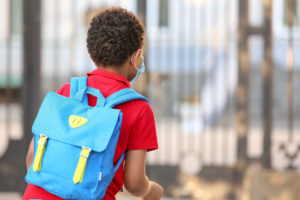(2021, December 29) | Useful for schools and families alike
 Presented in infographic form and available as a 1-pager, this guide from the CDC updates its isolation and quarantine recommendations for the public. CDC expressly notes that these updated recommendations do not apply to healthcare personnel and do not supersede state, local, tribal, or territorial laws, rules, and regulations.
Presented in infographic form and available as a 1-pager, this guide from the CDC updates its isolation and quarantine recommendations for the public. CDC expressly notes that these updated recommendations do not apply to healthcare personnel and do not supersede state, local, tribal, or territorial laws, rules, and regulations.
Driving Question: What’s considered a “close contact” for children and adults with respect to exposure to COVID-19?
The guidelines answer this question by organizing the decision-making process (i.e., did the student or adult come in close contact with COVID?) into two main categories:
- Students in INDOOR CLASSROOMS and STRUCTURED OUTDOOR SETTINGS
- Students in NON-CLASSROOM SETTINGS and adults in ALL SCHOOL SETTINGS
Given those two settings, the decision-making process moves on to how close the contact was. Was the exposed student:
- Less than 3 feet away from another student diagnosed with COVID?
- Within 3-6 feet of the other student?
- Less than 6 feet away?
Based on the facts of the exposure, the guidelines offer answers into whether this exposure would be considered a close contact or not and the appropriate steps to be taken next, especially if quarantining for the student is indicated.
Access the infographic, at:
https://www.cdc.gov/coronavirus/2019-ncov/daily-life-coping/K-12-infographic.html

